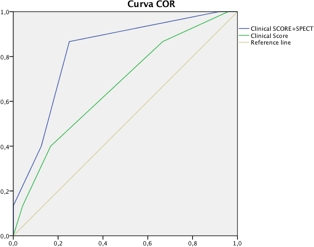Negative Exercise Myocardial Perfusion Scintigraphy Discards Silent Coronary Artery Disease in High Cardiovascular Risk Patients Awaiting for Kidney Transplantation
E. Melilli,1 V. Navarro,2 O. Bestard,1 A. Gomez,3 J. Cruzado.1
1Kidney Transplantation Unit, Hospital de Bellvitge, L'Hospitalet de Llobregat, Barcelona, Spain
2Nephrology Service, Hospital San Juan de Dios, San Jose, Costa Rica
3Cardiac Intensive Care Unit, Hospital de Bellvitge, L'Hospitalet de Llobregat, Barcelona, Spain.
Meeting: 2015 American Transplant Congress
Abstract number: A169
Keywords: Angiography, Hemodynamics, Kidney transplantation, Screening
Session Information
Session Name: Poster Session A: Kidney: Cardiovascular and Metabolic
Session Type: Poster Session
Date: Saturday, May 2, 2015
Session Time: 5:30pm-7:30pm
 Presentation Time: 5:30pm-7:30pm
Presentation Time: 5:30pm-7:30pm
Location: Exhibit Hall E
Study Purpose:
Screening for silent coronary artery disease (SCAD) in patients awaiting kidney transplantation is still controversial. Indeed, guidelines of some scientific societies show important discrepancies. The aim of this study is to evaluate the diagnostic accuracy of exercise nuclide 99TC-tetrofosmin myocardial perfusion scintigraphy (SPECT) in detecting significant coronary artery disease that needs to be revascularized before kidney transplantation.
Methods
Our local protocol classifies the patients as low, medium and high risk for SCAD. Criteria for the High Risk group were age ( > 50 years) plus one among the three following risk factors: Diabetes mellitus and/or prior cardiovascular disease (myocardial infarction, Stroke) and/or extracardiac atherosclerosis (peripheral vascular disease, carotid disease). In this group a coronary angiography was indicated independently of the result of SPECT performed before the angiography.
Results
From Oct/2012 to Oct/2014, 55 angiography were performed to study before entry in list.
14 patients (25.7 %) showed significant coronary artery stenosis that needed stent revascularization or coronary bypass surgery. No patients experienced complication related to the angiogram procedure.
The sensibility and specificity of the SPECT for SCAD was 100 and 65.2 % respectively. Assuming a prevalence of 25% of coronary artery disease the positive predictive value and negative predictive value of SPECT for SCAD was 48.9 % and 100% respectively our cohort of patients classify as high risk.
When scoring one point to each risk factor and adding the result of SPECT, the discriminating capacity of the score to predict significant coronary disease improved, as shown in Figure 1. Conclusion.
Conclusion.
In chronic kidney disease patients with high risk of SCAD the presence of a negative SPECT means absence of SCAD, thus precluding coronary angiography.
To cite this abstract in AMA style:
Melilli E, Navarro V, Bestard O, Gomez A, Cruzado J. Negative Exercise Myocardial Perfusion Scintigraphy Discards Silent Coronary Artery Disease in High Cardiovascular Risk Patients Awaiting for Kidney Transplantation [abstract]. Am J Transplant. 2015; 15 (suppl 3). https://atcmeetingabstracts.com/abstract/negative-exercise-myocardial-perfusion-scintigraphy-discards-silent-coronary-artery-disease-in-high-cardiovascular-risk-patients-awaiting-for-kidney-transplantation/. Accessed December 15, 2025.« Back to 2015 American Transplant Congress
